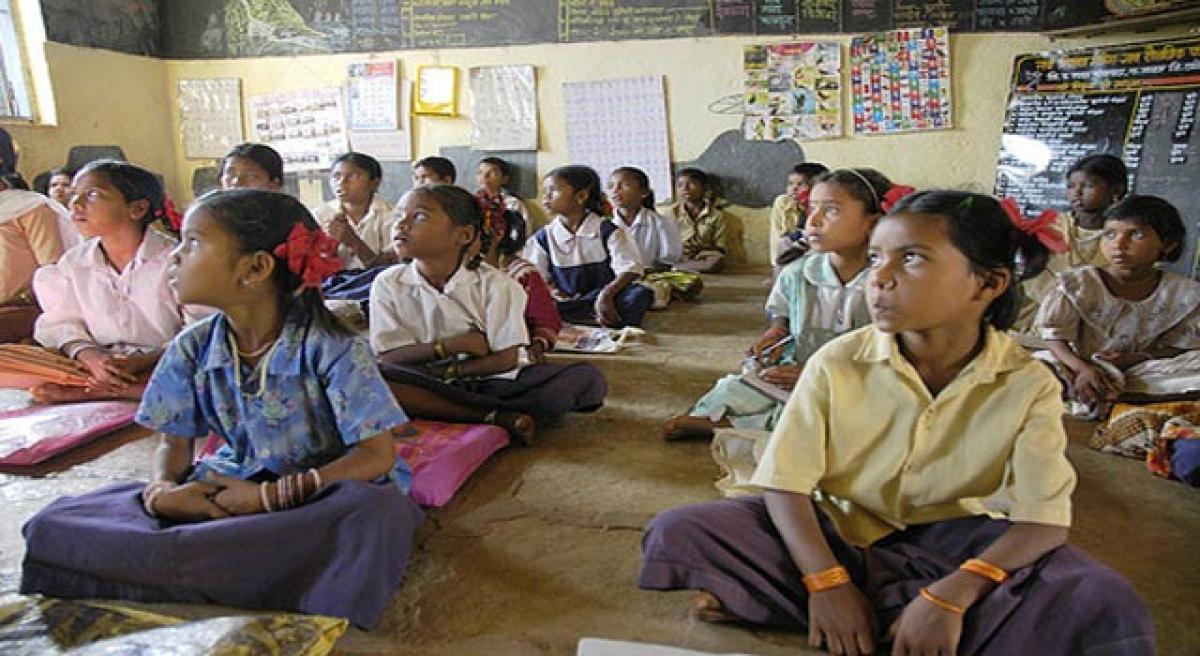Live
- Allu Arjun Seeks Lunch Motion; Court Hearing Scheduled for 2 PM Today
- Vijayawada hosts Swarnandhra Vision-2047 Program to foster development in AP
- World Bank okays loan for new project to boost earnings of UP farmers
- Zomato gets GST tax demand notice of Rs 803 crore
- Atul Subhash suicide: No arrests made yet, says Bengaluru Police Commissioner
- Indian agrochemicals sector to see 7-9 pc growth next fiscal: Report
- SC refers to CJI Cong leader’s petition for verification of EVMs used in Haryana polls
- To become the youngest world champion is truly a great feat: Gill congratulates Gukesh
- Case Filed Against Allu Arjun Under Four Sections
- Remembering A Visionary Leader.
Just In

In a country where only 59 per cent of Grade III children can read and understand a passage, according to the government\'s National Achievement Survey, good quality teaching could be key to changing the school environment and encouraging learning.
Hiralal, a 36-year old head teacher in a small government school in Basarpur, a village in Rajasthan, was absent 45 out of 200 working days (22.5 per cent), the school time prescribed by the Right to Education (RTE) Act. (The name of the teacher and the school have been changed to maintain confidentiality.)
In a country where only 59 per cent of Grade III children can read and understand a passage, according to the government's National Achievement Survey, good quality teaching could be key to changing the school environment and encouraging learning.
Contrary to common perception, Hiralal was not absent because he had decided to skip school without legitimate reasons; he was absent 21 days because of official reasons such as examination duty, trainings and election-related duty, and 15 days for personal reasons, including 10 medical leaves, which he was entitled to as part of his contract. On average, teachers at Basarpur School were on official duty for 16 of 200 days (8.4 per cent).
While overall teacher absence was 18.9 per cent, teacher absenteeism without reason or because of truancy was only 2.5 per cent, according to a recent study conducted by the Azim Premji Foundation, a non-profit that works in education across six states Chhattisgarh, Rajasthan, Uttarakhand, Bihar, Karnataka and Madhya Pradesh.
Hiralal's case study was a part of this research, which covered 619 government schools with 2,861 teachers. Teachers might be "absent" from classrooms because of several legitimate, and sometimes even useful, reasons, known as "teacher absence". On the other hand, "teacher absenteeism" refers to teachers being absent from school without a legitimate reason, that is, truancy. Confusing teacher absence with teacher absenteeism could lead to ineffective policy, and unfair and demotivating vilification of teachers.
Often when teachers were not present physically in the classroom, it was for official reasons, such as trainings, data collection, and authorised leave, the study found. Official reasons for absence include "official academic duties", such as trainings and cluster meetings; "official school administrative duties" such as data collection, submission of reports or data related to the mid-day meal programme, children with special needs, and work related to various student-incentive programmes such as distribution of textbooks; and "official other departmental work" which included work related to elections, census surveys, etc.
Several studies have found a large difference between teacher absence and teacher absenteeism. For instance, teacher absence was found to be 23.64 per cent, in a 2016 World Bank Group study, while teacher absenteeism without reason was 4.7 per cent. Despite this, popular discourse on teacher accountability, and senior government officers often refer to remarkably high figures of teacher absenteeism – around 25 per cent, but sometimes even as high as 50 per cent – without citing any research evidence.
Teachers at Basarpur school face many challenges: The school mainly targets marginalised communities who cannot provide adequate home support for their children, it doesn't have adequate infrastructure, fewer teachers than even the number of grades in the school, and little monitoring or support by district- and block-level education officers.
It takes two of the teachers between one and two hours to reach school (higher commute times have been linked with greater teacher absenteeism), and still they mostly attended school regularly and punctually, and took about 11 authorised personal leaves, on average.
Should we consider the possibility that the nature of teaching itself encourages teachers to be committed and motivated, and hold themselves accountable without external monitoring, provided there is an enabling work environment that facilitates collegiality and trust? Teacher absenteeism is often seen as the single-most critical issue that is plaguing the government school system. For example, the government suggested biometric systems as a means to curb teacher absenteeism in its 2016-17 Economic Survey.
The new evidence from this study, and some previous evidence, begs the question: Should we instead focus our energies on systemic reform in the education system through ensuring adequate number of trained teachers, making relevant and good quality continuous professional development opportunities available for them, and by doing away with non-academic duties of teachers? A culture of targeting and blaming teachers – who often work in challenging situations – for matters that are beyond their control might be counterproductive and adversely affect the government school system. (In arrangement with IndiaSpend.org)
By Anish Madhavan

© 2024 Hyderabad Media House Limited/The Hans India. All rights reserved. Powered by hocalwire.com







